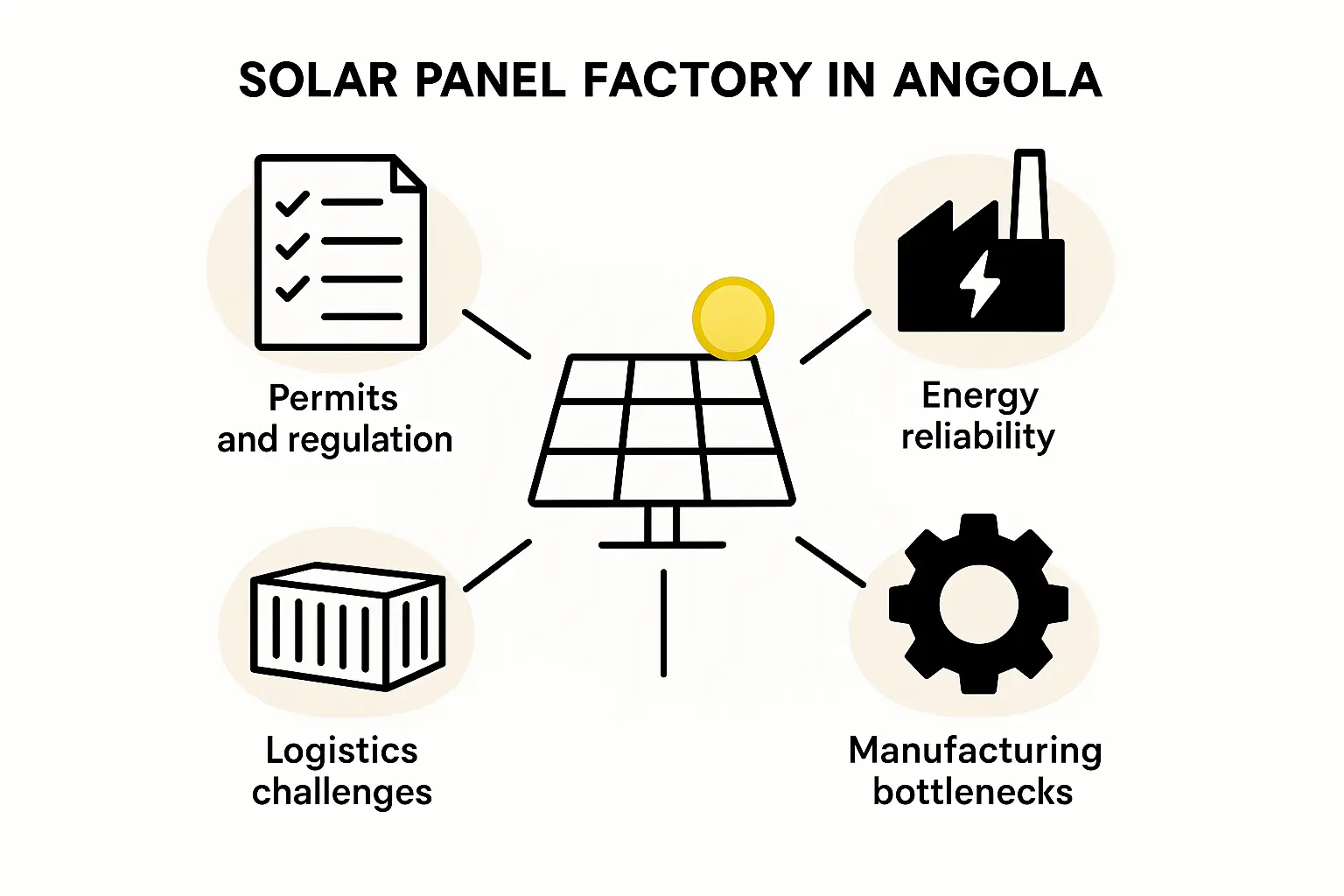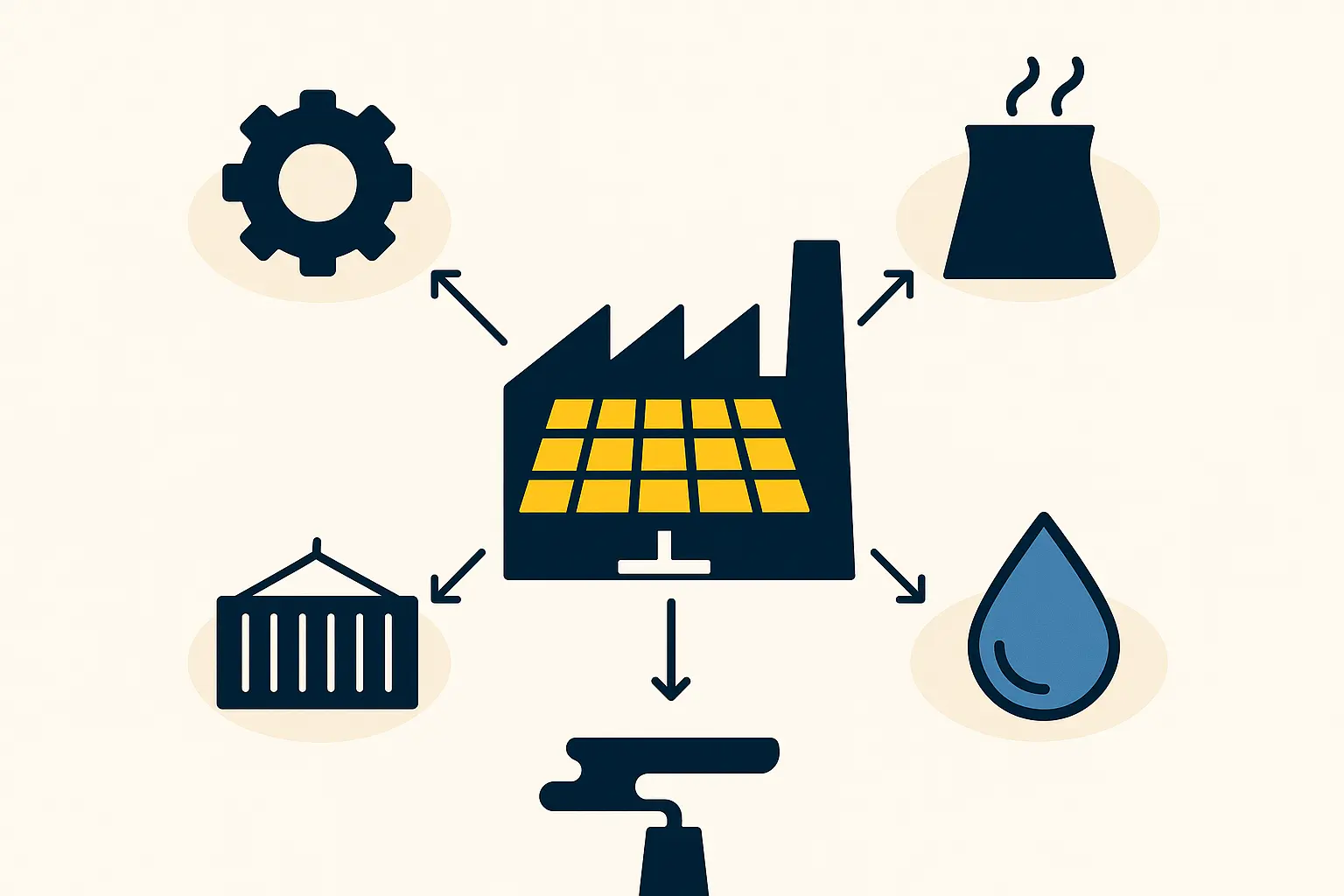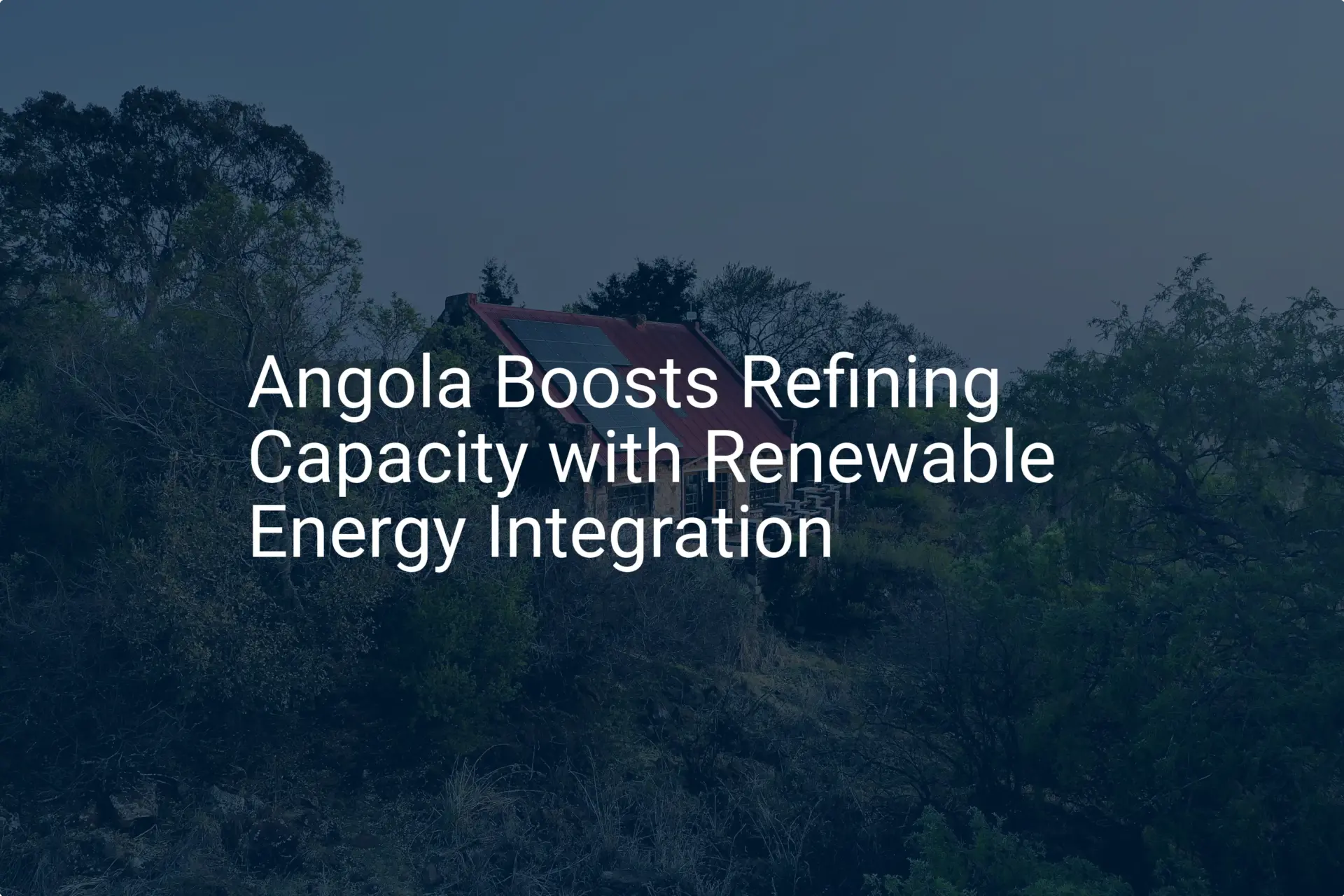Dreaming of setting up a solar panel factory in Angola? Let’s dive into what starts it all—getting the infrastructure right.
Amid the global shift to clean energy, countries like Angola—with its abundant sunshine and clear vision for the future—are especially promising locations for solar panel manufacturing.
While the nation’s aspirations for sustainable industrial growth have put it on the global radar, setting up a factory involves more than just assembling equipment. Success ultimately hinges on the nitty-gritty details of the core Angola infrastructure: logistics, energy supply, and land access.

If Angola is on your list for solar module production, you’re in the right place. Let’s walk through the essential infrastructure elements you need to address. This roadmap will guide you from a bright idea to a bustling solar panel factory.
Table of Contents
Angola’s Vision: Industrialization with Solar Power
Angola isn’t standing still; it’s taking tangible steps to reshape its economy by boosting industrialization through renewable energy, especially solar. The ‘Energy Angola 2025’ strategy spells out aggressive goals for renewable adoption, aiming to expand energy access while reducing reliance on fossil fuels. These ambitions position Angola as an attractive destination for investors in solar manufacturing.
Establishing a local solar panel manufacturing sector isn’t just a technological goal; it’s a powerful lever for job creation and economic diversification.
Logistics and Transportation: The Manufacturing Lifeline

Logistics is the backbone of any manufacturing venture. An efficient network dictates how easily you can obtain raw materials and deliver finished products. Fortunately, Angola has been making significant investments in its logistics network.
Maritime Infrastructure: Gateways for Global Reach
Angola’s lengthy coastline hosts vital ports, enabling international trade. The most significant ports include:
- Luanda: Angola’s busiest port, responsible for handling the majority of its cargo.
- Lobito: More than just a port, it’s linked to the Benguela Railway, a crucial route inland and to neighboring Congo.
- Other key players: Namibe, Cabinda, and Soyo—all integral to maritime logistics.
With Angola eyeing a role as a regional logistics lynchpin, investment is pouring into upgrading port facilities. For your solar venture, these ports will be essential for importing components like solar glass and aluminum frames, and for exporting your finished products. Investigate port capacities, efficiency, and costs upfront to avoid unexpected challenges.
Road Infrastructure: Tying the Nation Together
A reliable road system connects these ports to industrial and commercial hubs. The EN-100 highway is crucial, linking coastal cities and ports. While improvements are underway, check the current state of roads near potential factory sites, as their condition will impact your logistics timelines and budget.
Rail Infrastructure: Reaching Inland Markets
Angola’s railway network, particularly the Benguela Railway, offers promising access to inland markets. As planned expansions proceed, these rail lines could become cost-effective transportation arteries for manufacturers, facilitating bulk material movement.
Delving deep into logistics isn’t just advisable—it’s essential. Angola is investing heavily, yet you need clarity on capacity, potential bottlenecks, and costs to ensure a seamless supply chain for your solar factory.
Energy Infrastructure: The Heartbeat of Production
Solar panel production is energy-intensive, so a stable, affordable electricity supply is non-negotiable.
National Power Grid: Overview
Angola’s grid is split into Northern, Central, and Southern systems, with integration plans underway via the 400 kV line by 2025 to boost stability.
Grid Reliability and Stability
Despite progress, consistent power is still a challenge, with only around 47% of the population having reliable electricity access. For a factory, erratic power can mean costly production disruptions. It’s crucial to research local grid reliability and plan for backup power solutions.
Electricity Costs for Industrial Consumers
The cost of electricity is a vital budgeting factor. Rates fluctuate, so investigate current pricing structures and seek preferential rates available in Special Economic Zones for strategic industries like solar manufacturing.
Angola’s Solar Leap
Angola is harnessing its solar potential, featuring high solar radiation between 1,350 and 2,070 kWh/m² annually. In 2023 alone, it added 1.1 GW of solar capacity, marking a top global achievement. Major solar projects underscore this commitment, yet your factory’s success will still depend on local grid capacity.
Water Access and Management: The Hidden Hero of Production

Solar panel manufacturing requires a steady supply of high-quality water, essential for processes like cell washing.
Water Availability and Infrastructure
Scout industrial areas for reliable water sources and assess whether local systems can handle industrial demand. Water quality matters, too—you may need on-site pre-treatment facilities.
Wastewater Management
Complying with environmental regulations for wastewater is critical. Assess the available infrastructure for treating your facility’s wastewater and account for these costs from the get-go.
Land Availability: The Essential Foundation
Choosing the right site is pivotal to your factory’s success. Thankfully, Angola has established specific zones to encourage industrial growth.
Industrial Zones Overview
Special Economic Zones like the Viana Industrial Park offer robust infrastructure and potential incentives. Areas around Benguela, Huambo, and Luanda Norte/Sul are also well-suited for development.
Land Acquisition and Tenure
Understand the process, costs, and legal requirements of acquiring industrial land in Angola. Grasping these details early can prevent significant delays.
Serviced Land Necessities
Seek ‘serviced’ industrial plots that already offer utility connections like power and water. Investigate their proximity to transport hubs and labor pools. Locating your factory in one of these designated zones could mean smoother land acquisition and operations.
Tackling Challenges, Embracing Opportunities
Yes, setting up a factory in a developing economy like Angola comes with hurdles. However, the opportunities driven by Angola’s solar vision, strategic location, and local demand for panels are vast. The government’s focus on industrialization could also provide significant support and incentives.
The Next Steps
A thorough examination of Angola’s infrastructure—logistics, energy, and land—is the critical first step for your factory. Though challenges remain, the country’s development efforts and strategic direction suggest a promising future for solar manufacturing.
Boots-on-the-ground due diligence, including site visits and meetings with local authorities, is invaluable. Understanding Angola’s infrastructure nuances will allow you to manage risks effectively and seize the country’s solar opportunities.
Ready to explore solar manufacturing opportunities in Angola in depth?
A tailored consultation and a targeted market analysis are your best next steps. At PVknowhow.com, we’ve been setting up solar production worldwide, and we’d love to share the invaluable insights we’ve learned. Let’s connect—we’re here to support your journey every step of the way. Let’s talk and make your solar factory vision a reality!






